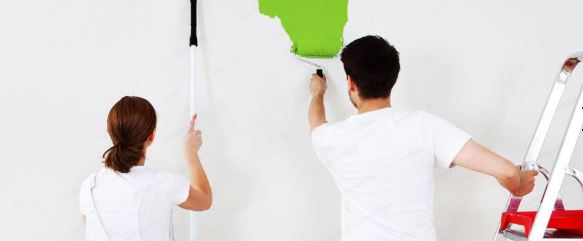Brushwork Painters has over 30 employees and numerous outfitted vehicles, helping us remain a force in the region for painting projects.

The kind of paints selected and used could be influenced by a number of factors. Questions like these arise: Is the room properly ventilated? Do you want a glossy finish or a more relaxed finish?
The dangers of organic fumes by the paints.
Sometimes you need to paint a room in which there is little to no ventilation and it is not possible to make the situation any better, such as in a basement. Water paints are the go to for these projects. Oil paints are more likely to give a glossy finish, but are more hazardous and create more fumes than water based paints. Oil based paints are harder to get out of flooring or furniture if you spill them and are slightly more expensive.
We, Brushwork Painters, are more concerned about those factors because it helps us satisfy our clients adequately, while still being aware of the safety of our painters and our clients.
For Simplicity and clarity, I will classify paints under 2 categories: Water based paints and Oil based paints.
(1) Water Based Paints or Latex Paints
These paints are basically prepared by suspending acrylic or latex – the pigment binder – in water which is used as the solvent. For preparation before a paint job, that explains why water is most preferred to mix the paint to any other liquid substance.
Pros
Cons
(2) Oil Based paints
These paints are basically pigments suspended in a drying oil – though the need for an additional oil like turpentine will be needed to mix prior to an oil paint task. They are often used to paint furniture, floors, metals, and for artistic painting.
Pros
Cons
NB: For walls that have been painted on before with an oil paint, if you intend to apply a water based paint on that same wall you might find it hard to make it work; our seasoned personnel could get the wall ready by “power washing” – which is one service we also specialize in.
I want to believe that this article is expository enough to appropriately summarize the different classes of paints there is and their special qualities.
We at Brushwork Painters understand the essence of giving the best quality for our customer’s satisfaction. Hence, we endeavor to buy quality pants to achieve that goal.
A complete interior home painting and finishing project involving textured accent walls, faux finishes and new paint throughout. This home painting project by our York painters was one for the picture books.
Aug 09, 2018